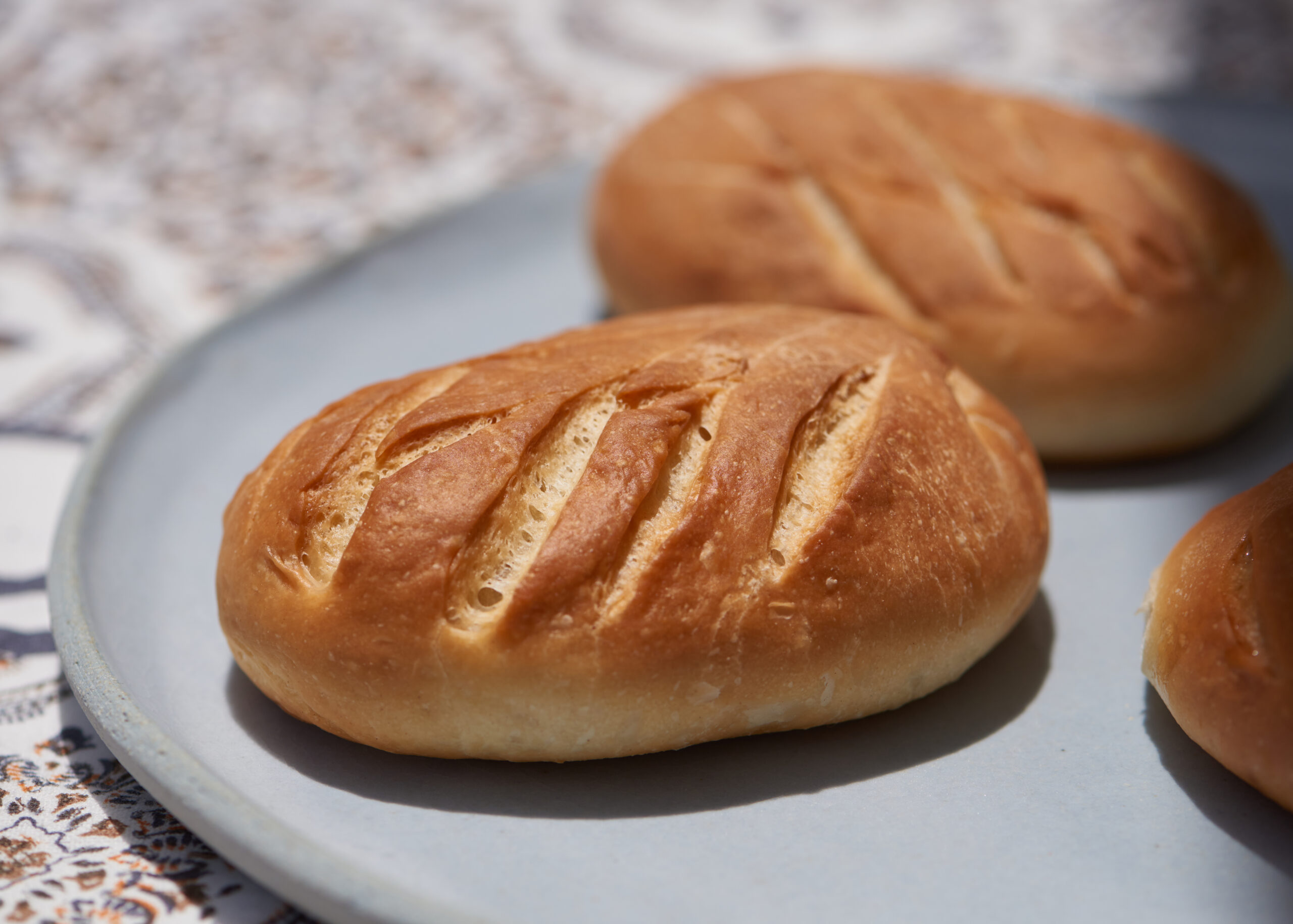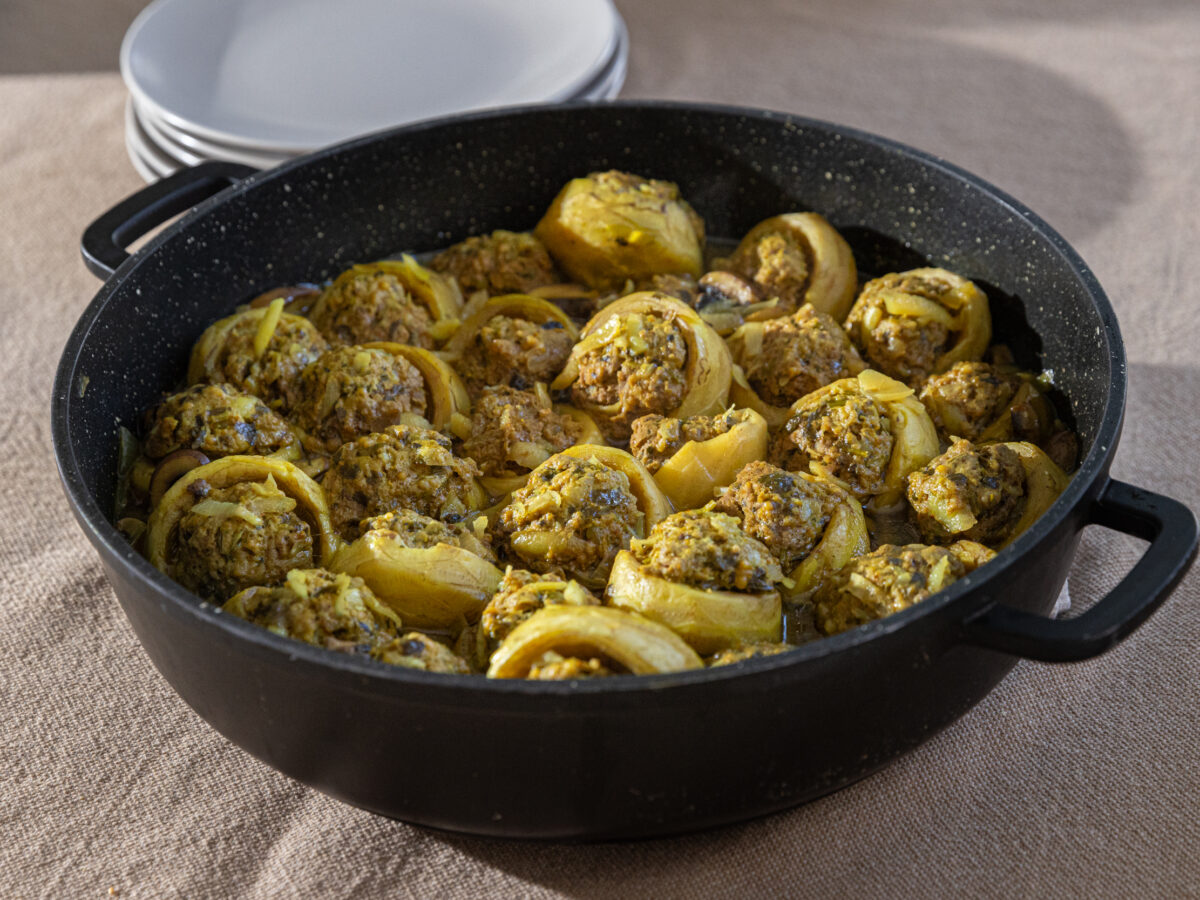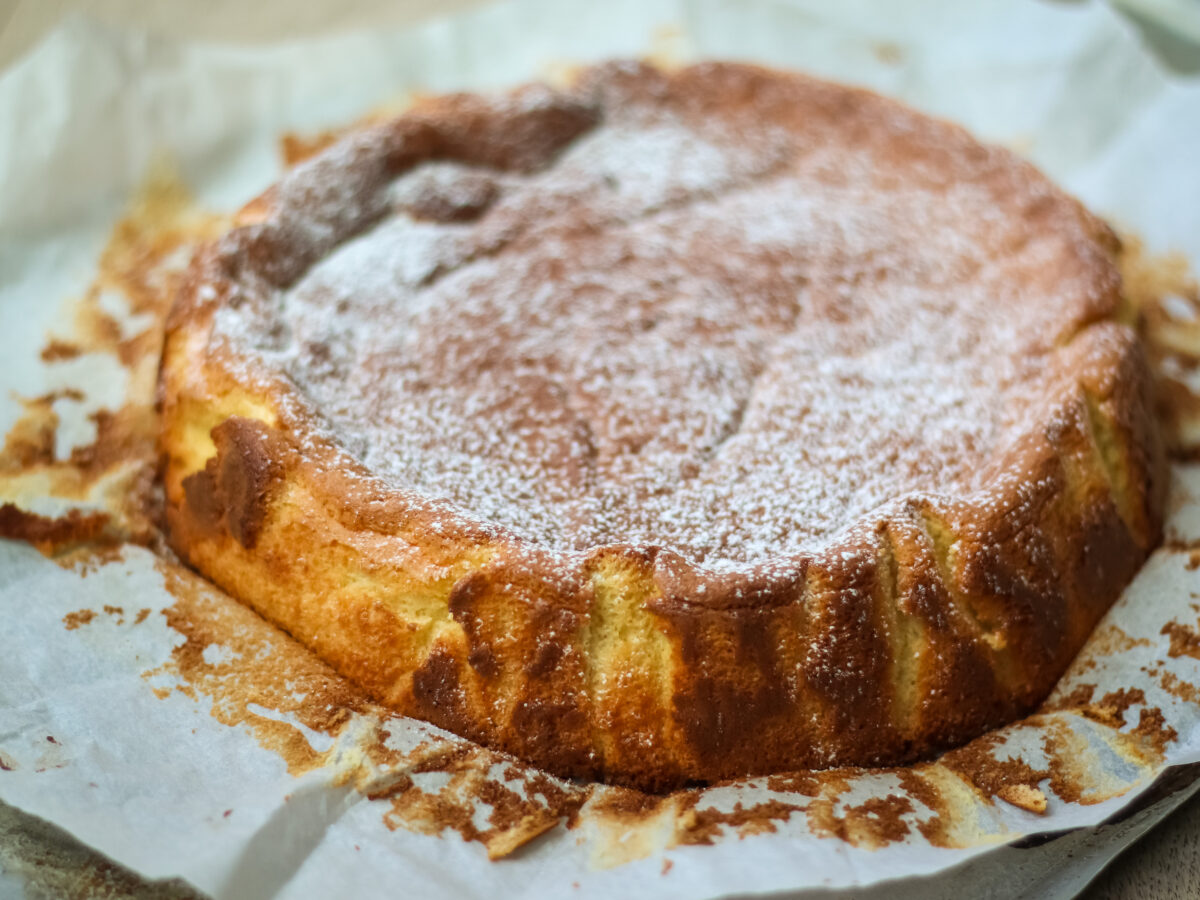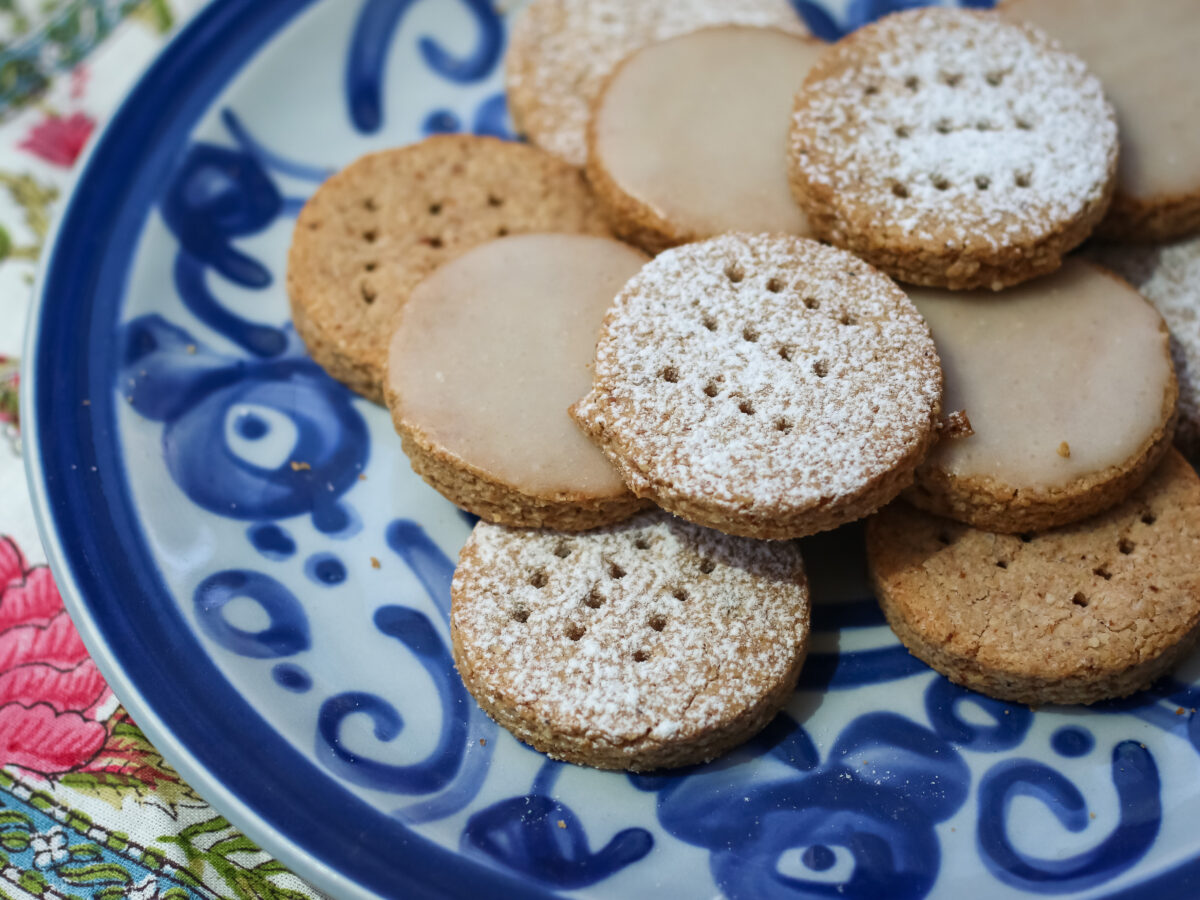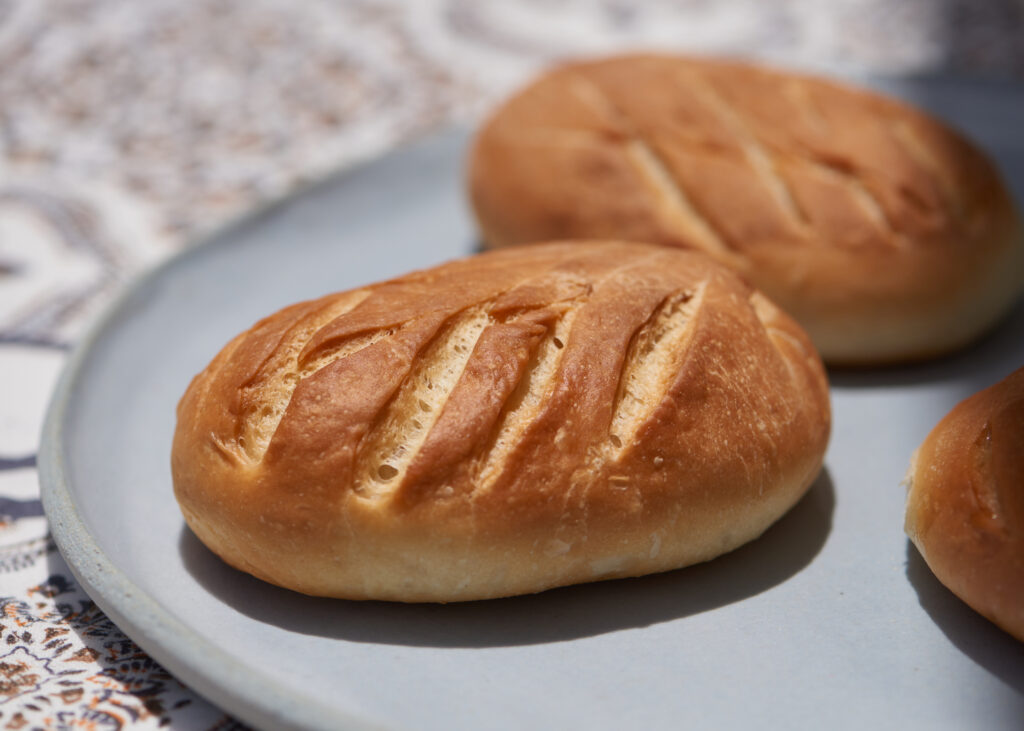
In 17th-century Egypt, this bread was known as “samuli.” In the Sasanian dialect (the language of the last pre-Islamic Persian empire), the words “mašmūl” and “šumūl” both meant “bread.” In its shape, this bread resembles a modern roll. In the Persian Gulf region, various types of modern rolls and baguettes are still called “samuni.”
The modern recipe, created by baker Safa Boshnak, was inspired by the traditional bread.
Ingredients
- 4⅓ cups / 500 grams all-purpose flour
- 1¼ cups water / 280-300 ml lukewarm water
- ⅔ tablespoon / 10 grams sugar
- 2½ teaspoons / 8 grams active dry yeast
- 3½ tablespoons / 30 grams vegetable or olive oil
- 1⅓ teaspoon / 7 grams salt
- 4 tablespoons olive oil, for greasing
Preparation
- Place all the ingredients, except for the salt and oil for greasing, in the bowl of a stand mixer fitted with the dough hook and mix at medium speed for 4 minutes.
- Add the salt, increase to a high speed and knead for 6-7 minutes. Cover and let rise for 1 hour at room temperature.
- Divide the dough into 10 balls weighing 3½-ounces / 100 grams each. Place on a baking tray lined with parchment paper, cover and let rise for 20-30 minutes.
- Preheat the oven to 450°F / 230°C. Shape each ball into an elongated roll (about 5-in / 12-cm), lightly flatten and score with a knife. Alternatively, rub your hands lightly in the olive oil, and press your fingers to create dimples in the dough.
- Brush the rolls with olive oil and bake for 10 minutes. Reduce the oven temperature to 400°F / 200°C and bake for 5-7 minutes more.
